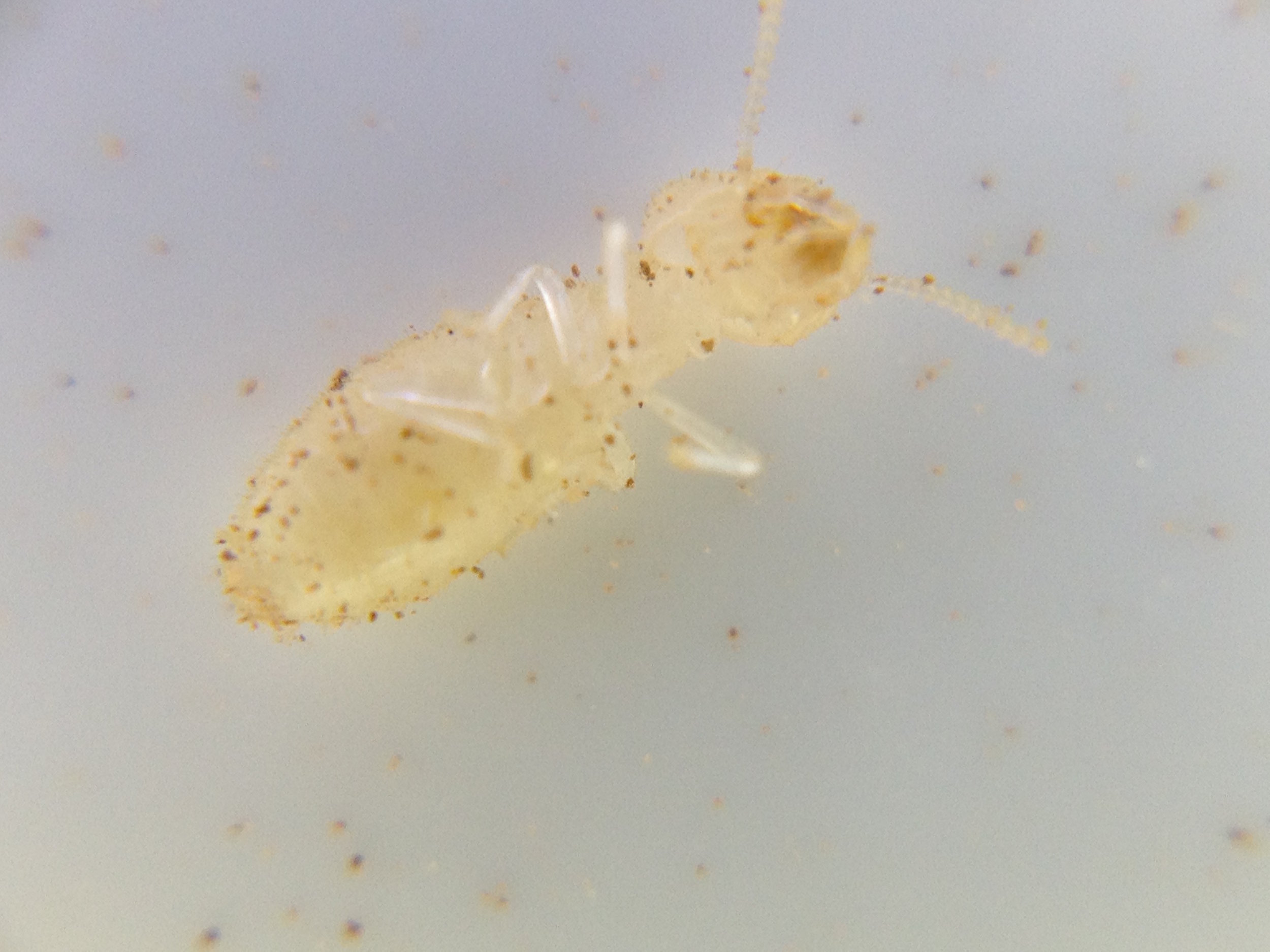Professional termite control services
- South Burnett (Kingaroy, Murgon and surrounds)
Protect your property from termites...
The chances of your property coming under termite attack is greater than house fire, flood and other natural disasters combined, yet it is not covered by your home insurance! Termite management is often overlooked by home owners, but in many ways it is more important than your home insurance and should be considered a standard cost of home ownership.
Don't think termites just attack old, wooden homes, CSIRO estimate that 1 in 5 new homes will be attacked within the first five years!
Termite damage behind shower wall
A termite management plan
To provide the best protection for your home you need to put in place a termite management plan. This involves three key components
- Making conditions around your home less attractive to termites
- Having an annual professional termite inspection (more often in high risk areas)
- Installing a termite management system around the building to provide lasting protection
If you are building a new home or doing some renovations, you also need to consider termite protection options BEFORE your project starts.
Of course if you are buying a home rather than building one, it is vital to get a comprehensive pre-purchase pest inspection carried out, to make sure the property is sound and you are making a good investment.
What to do if you think you have termites?
DON'T:
- PANIC OR WORRY!
- Touch them
- Break open walls or mud tubes
- Spray them with insecticides
DO:
- CALL US IMMEDIATELY
- Cover any areas where termite activity has been exposed on walls, skirting boards and architraves, with thick tape to prevent any further disturbance
We know when you first come across termites, you may well have disturbed them, but it is important to stop there. Too much disturbance can frighten the termites away from an area and they will then appear elsewhere (probably out of site). Better to know where there are so we can treat them quickly and successfully.
Large termite lead in sub-floor - don't be tempted to break open!
So if you know you have or think you may have termites, give as a call and we will come around as quickly as possible to provide advice to put you at ease and an obligation free quote.
Termite inspections - a "Health check" on your home
Annual termite inspections are a vital part of home ownership. They involve inspecting the house and surround property for termite activity, termite damage and conditions that could make a termite attack likely. Although inspections do not stop termite attacks, they can pick up the first signs of damage before major damage is done and identify conducive conditions that could make a termite attack more likely.
Pest Options provide professional, comprehensive termite inspections - learn more...
If you don't have a termite management system in place to protect your property, our inspectors will also provide options for installing an appropriate anti-termite system to protect your home.
Termite treatments - eliminate termites and provide lasting protection
Termite management systems are the best way to protect your home from termites. When combined with regular termite inspections, they greatly reduce the chances of a termite attack on your property.
If you have active termites on your property...
The first step is to eliminate any active termites from the building. This can be achieve with a number of different products (baits, foams, dusts or liquids), the choice or product will depend on the species present and the particular situations at your property.
When the termites have been eliminated from the building there is often no way to confirm that the nest has been destroyed and so they may return in the future. Of course there may also be other termites in the area waiting to attack your house! As such, once the termites have been confirmed as eliminated from the building is is necessary to install a termite management system around the perimeter of the building to prevent future attacks.
Active termites behind a wall
Termite management systems to provide lasting protection
Broadly speaking there are two types of termite managements systems that are used to protect existing buildings from termites
- Liquid soil treatments - liquid insecticide is mixed with the soil around the property creating a treated zone which either repels or kills the termites (depending on the product used)
- Termite baiting systems - plastic bait stations containing wood are placed in the ground around the property. Any termites in the area will start feeding on the wood, when they do, the pest manager adds a termite bait which the termites take back to the nest, killing the colony.
Generally, liquid soil treatments are the preferred termite management system as they are always working to protect your home and assuming the soil is not disturbed by the homeowner and there is no major flooding, they should last at least 5 years.
The important point to remember with all termite management systems is that they are designed to prevent termites from concealed (hidden) entry into your home. For example a liquid soil treatment around your home does not stop the termites building a bridge over the top of the treated zone. However, when they do so, they will be spotted and the problem can be dealt with. That is why it is important to have annual termite inspections even with a termite management system in place.
Learn more about Pest Options Termite treatments
Termite protection for new homes and renovations
When you are building a new home or adding an extension to an existing property it is vital you consider how you are going to protect the building from potential termite attack. Although the builder should give you a range of options for consideration, for one reason or another this doesn't always happen. It's always best to consult with a professional termite company (such as Pest Options) when you are planning your project so you get the best advice up front. Learn more..
Tips for making your home less attractive to termites
Homeowners have a big role to play in reducing the chance of a termite attack on their property. Efforts should be focused on three areas;
- reducing areas of increased moisture around the home (termites love moisture!),
- reducing termite food (wood and paper) around the home
- making sure the perimeter, sub-floor and roof void of the home are clear of obstacles so any termite "break-ins" can be seen.
Here are some simply tips to make your home less attractive to termites
Reducing moisture around and under your home
1) Ensure ground water drainage flows away from / around your home.
Ground level should slope away from house and / or soil drainage systems should be installed. If you have a moist sub-floor, installing fans may also be beneficial.
2) Don’t have a watering system or regularly water plants adjacent to the house.
This really means you need to avoid substantial garden beds adjacent to the house.
3) Ensure roof guttering and downpipes do not leak and discharge to the stormwater drains.
4) Make sure any external taps are not dripping and ideally have a drain underneath.
Watering systems make garden beds attractive to termites
5) Check for leaks in the kitchen, bathroom and laundry
(You may need a plumber or pest inspector to help here).
Reduce potential termite food around and under your home
6) Do not use wood mulch immediately adjacent to the house.
If you must use wood mulch, make sure it has been treated with an appropriate insecticide or it is classed as termite resistant timber. Keep in mind, termite resistant does not mean termite proof!
7) Make sure any waste timber or cardboard boxes (also great termite food) are thrown out or stored above ground level, ideally away from the building.
Avoid storing waste wood and cardboard boxes under the house
8) Make sure any firewood is stored off the ground away from the building.
Firewood needs to be stored off the ground (on a metal framework)
Keep areas around and under your home clear
9) Keep the perimeter of your home clear of plants and stored items.
If you can’t see the edge of the building you won’t be able to see any termite “break-ins”!
10) If you have a sub-floor, avoid the temptation to store your excess / unwanted items in this inviting area.
Stored goods prevent your ability to see any termite activity and also reduce ventilation. If the stored goods include wood or cardboard boxes, you are also providing some nice termite food!


















